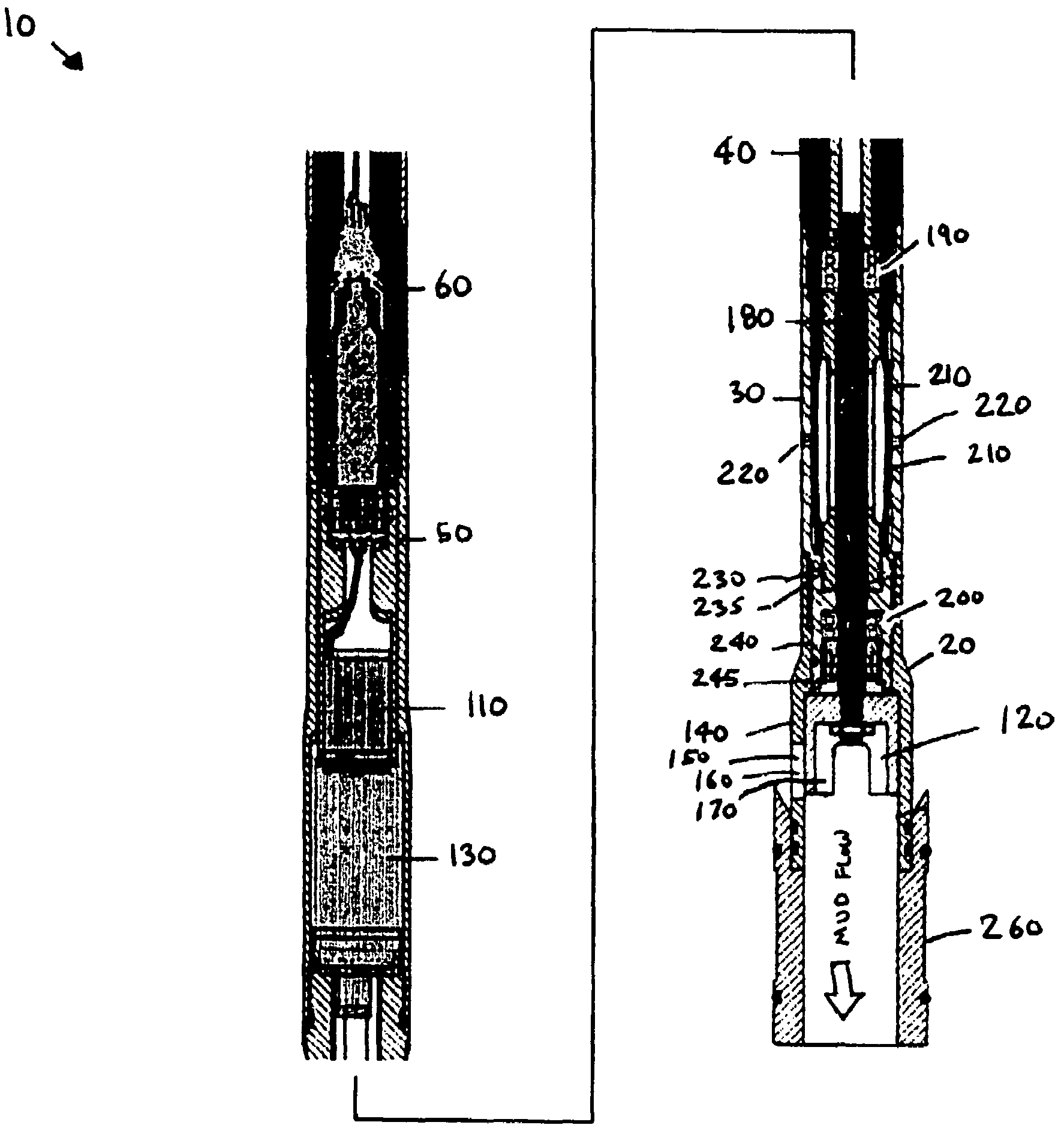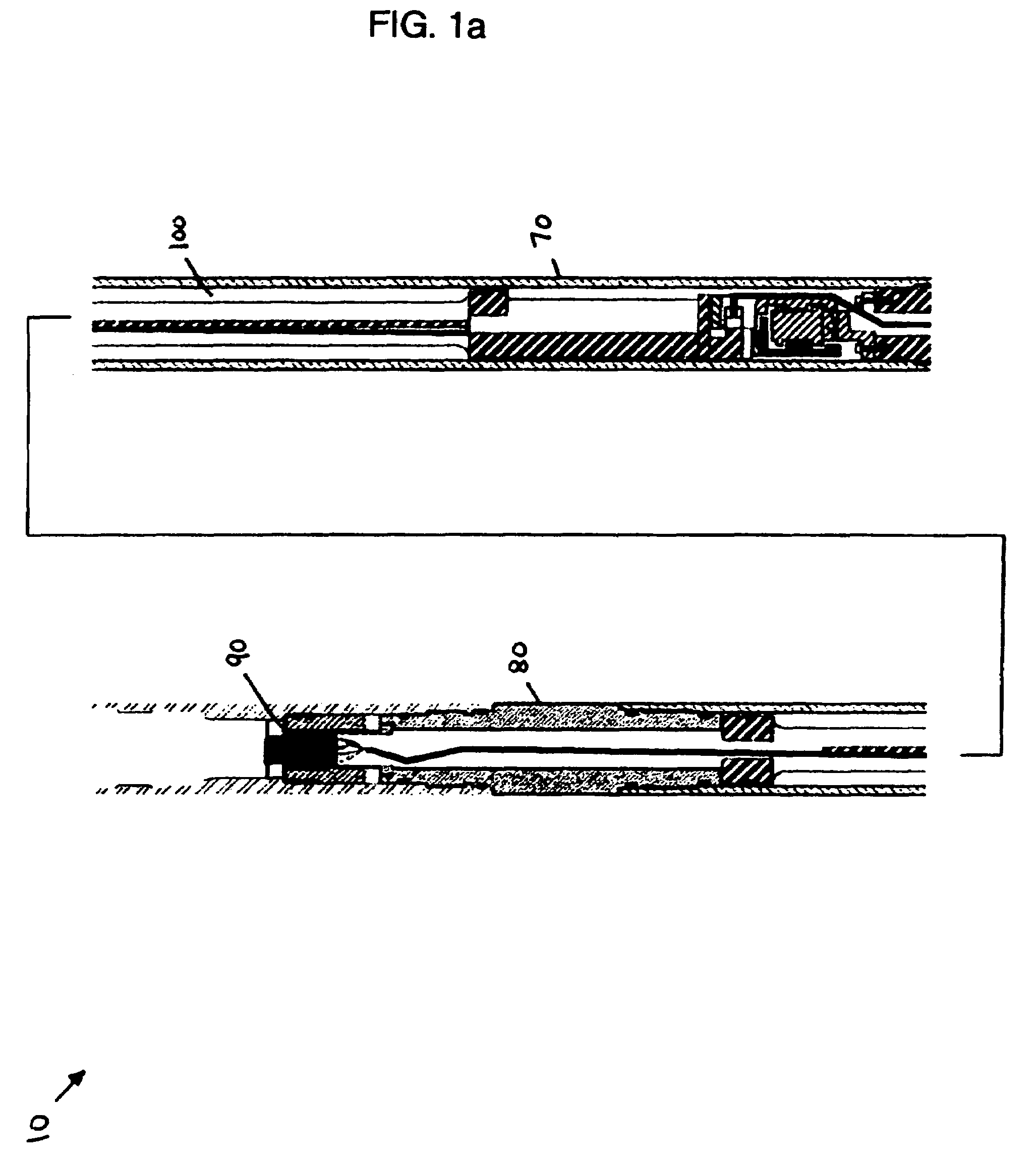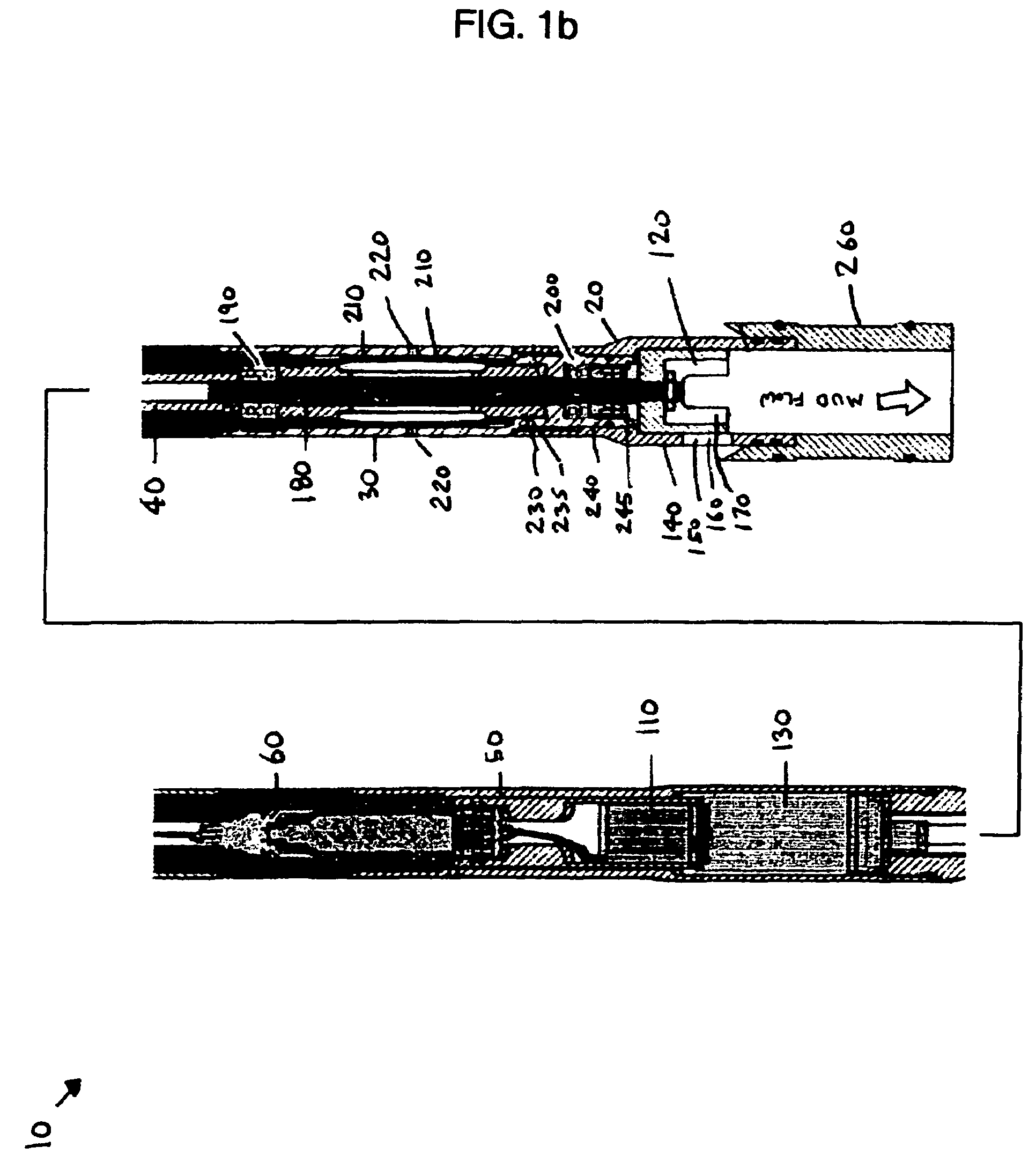Rotary pulser
a pulser and rotary technology, applied in the field of telemetry systems, can solve the problems of limited response and recovery speed typical of solenoid systems, inability to communicate useful information to the surface, and limiting the application of technology
- Summary
- Abstract
- Description
- Claims
- Application Information
AI Technical Summary
Benefits of technology
Problems solved by technology
Method used
Image
Examples
Embodiment Construction
[0032]The present invention relates to an apparatus and method for actuating a mud pulser telemetry system used during well-drilling or well logging operations. The present apparatus allows a pulser valve to be powered both in opening (e.g. to allow generally unrestricted flow) and in closing (e.g. to generally restrict flow,) and does not rely on a solenoid system.
[0033]The powered opening and closing of a windowed restrictor results in various functional and economic advantages, including the ability to clear debris from the restricted portion of the mud flowpath, and faster data rates due to elimination of inherent operating delays in the solenoid systems of previous tools, with the end result of providing a pulser driver which consumes a minimal amount of power (e.g. DC or AC electricity) while providing more force with which to drive the windowed restrictor in each direction. Therefore, the pulser remains functional at a comprehensive range of downhole drilling conditions.
[0034...
PUM
 Login to View More
Login to View More Abstract
Description
Claims
Application Information
 Login to View More
Login to View More - R&D
- Intellectual Property
- Life Sciences
- Materials
- Tech Scout
- Unparalleled Data Quality
- Higher Quality Content
- 60% Fewer Hallucinations
Browse by: Latest US Patents, China's latest patents, Technical Efficacy Thesaurus, Application Domain, Technology Topic, Popular Technical Reports.
© 2025 PatSnap. All rights reserved.Legal|Privacy policy|Modern Slavery Act Transparency Statement|Sitemap|About US| Contact US: help@patsnap.com



